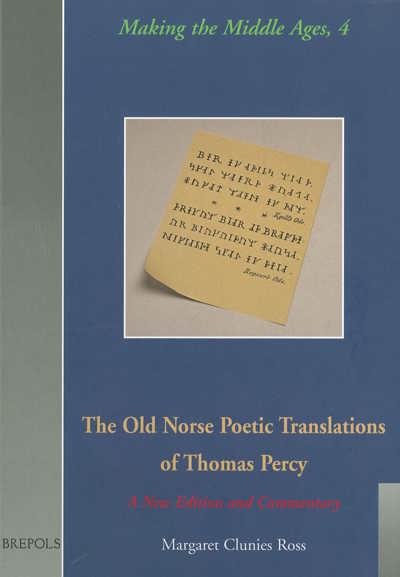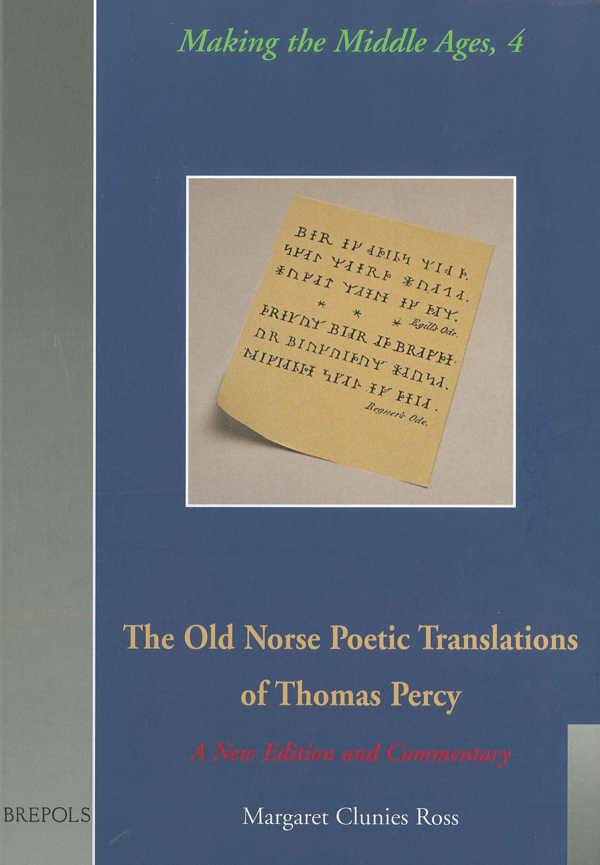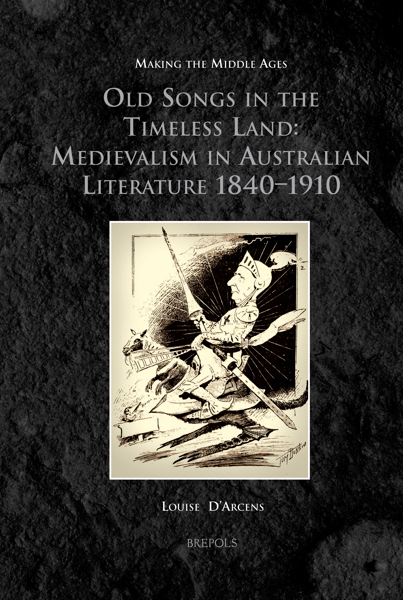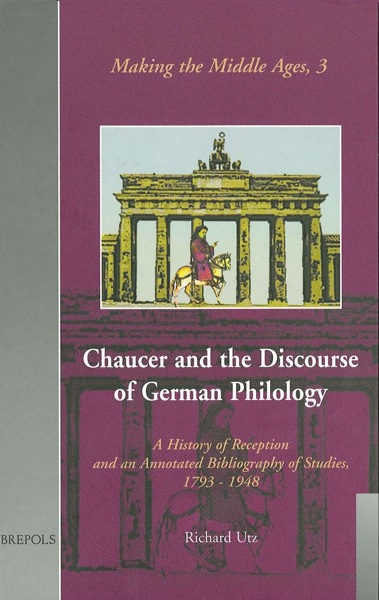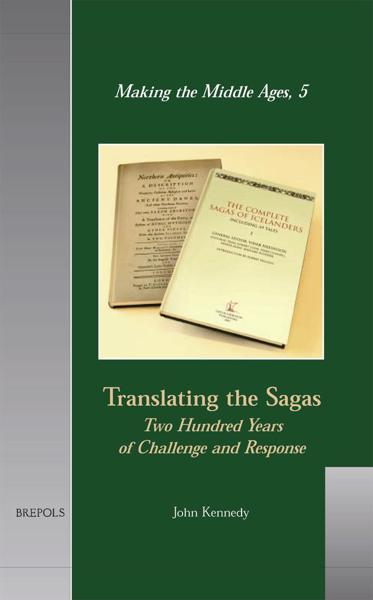
The Old Norse Poetic Translations of Thomas Percy
A New Edition and Commentary
Margaret Clunies Ross (ed)
- Pages: 290 p.
- Size:165 x 245 mm
- Language(s):English
- Publication Year:2002
- € 30,00 EXCL. VAT RETAIL PRICE
- ISBN: 978-2-503-51077-4
- Hardback
- Available
- € 30,00 EXCL. VAT RETAIL PRICE
- ISBN: 978-2-503-57241-3
- E-book
- Available
This study comprises a facsimile of the Old Norse poetic translations of Thomas Percy, with facing-page notes to allow the modern reader to situate Percy?s work in its intellectual context.
'[A] feature of Ross's work is her careful disentangling of Percy's sources. […] Ross explains carefully and well what Percy had available, what he understood or did not understand, and where he went wrong. […] It needs to be said that Brepols have created an unusually beautiful and well-produced volume, easy-to-read, devoid of error, splendidly and solidly bound' (T. Shippey in The Medieval Review (2003), ref. 03.01.02).
'The book is attractively produced, with clear fonts and arresting cover design, and will be welcomed by all who study the reception process' (R. Poole in Notes & Queries 50 (2003), p. 79).
Thomas Percy was the first serious translator of Old Norse-Icelandic poetry into English. He published his Five Pieces of Runic Poetry in London in 1763 and in 1770 published his translation of Mallet's very influential work on early Scandinavian literature and culture as Northern Antiquities (with extensive annotations and additions by Percy himself). In publishing Five Pieces, Percy was influenced by the success of Macpherson's first volume of Ossian poetry (1760) and his own wide-ranging interest in ancient, especially 'gothic' poetry. Five Pieces had a mixed reception and was never republished as a separate work, but reappeared as an appendix to the second edn. of Northern Antiquities. Nevertheless, it was a seminal work in the history of reception and understanding of Old Norse poetry in Britain and it also has more general significance in our understanding of the development of the discipline of Old Norse-Icelandic studies. This work makes available to the modern scholarly community the work of one of the pioneers of the discipline and produces in easily accessible format a text that is currently only available as a rare book. The study comprises a facsimile of the 1763 edition, with facing-page notes to allow the modern reader to situate Percy's work in its intellectual context, together with an introduction on Percy himself, his work on Old Norse-Icelandic studies, and the contemporary context of the reception of Old Norse poetry in Britain (and to some extent in the rest of Europe). In addition, this study publishes eight other poetic translations (one from Old English and the others from Old Icelandic) that Percy completed about the same time as the translations now in Five Pieces of Runic Poetry, but did not then publish, due to the restrictions of contemporary tolerance for demanding or difficult 'ancient' poetry. This publication reveals his full range as a translator for the first time.
